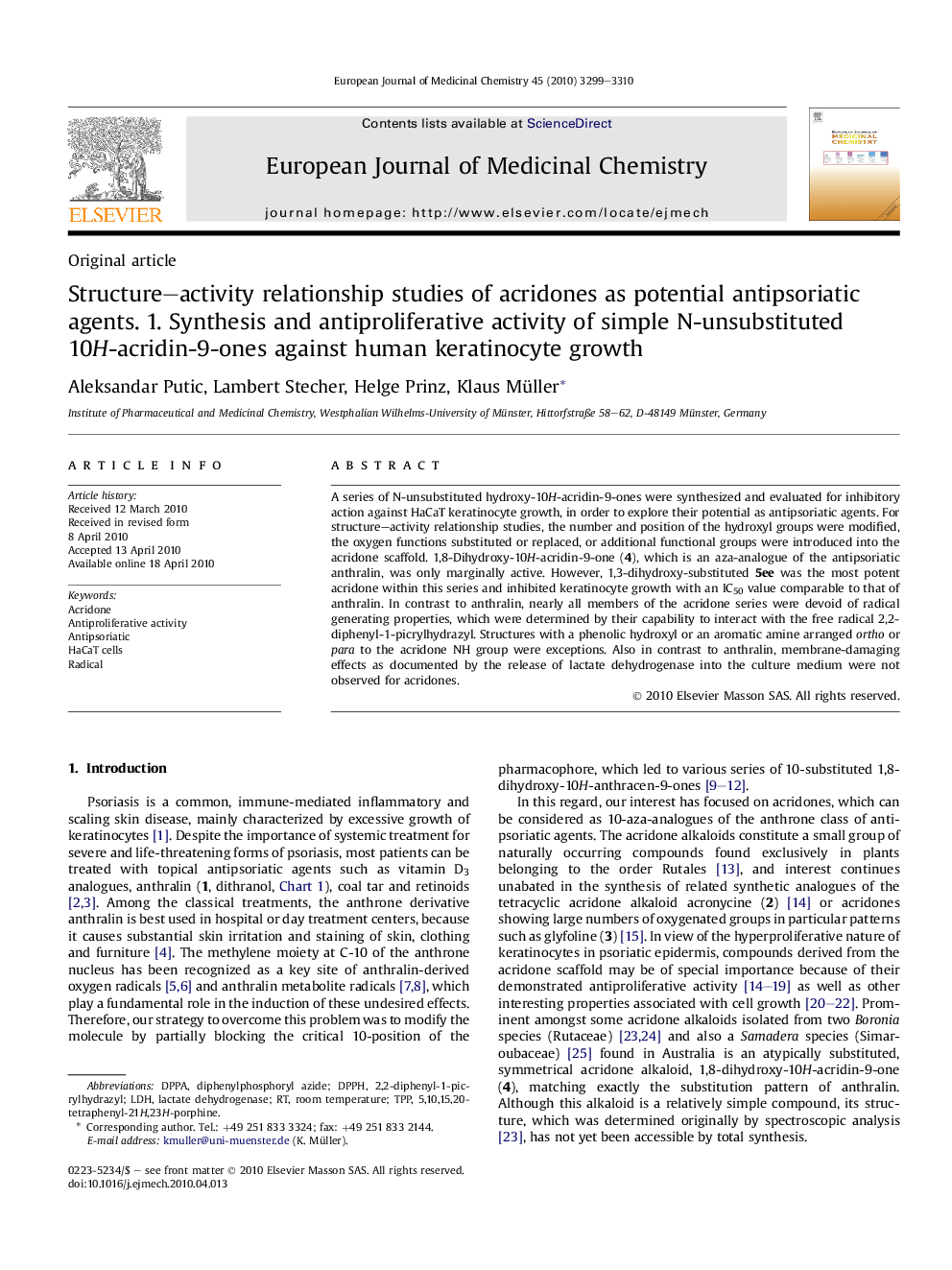| Article ID | Journal | Published Year | Pages | File Type |
|---|---|---|---|---|
| 1399487 | European Journal of Medicinal Chemistry | 2010 | 12 Pages |
A series of N-unsubstituted hydroxy-10H-acridin-9-ones were synthesized and evaluated for inhibitory action against HaCaT keratinocyte growth, in order to explore their potential as antipsoriatic agents. For structure–activity relationship studies, the number and position of the hydroxyl groups were modified, the oxygen functions substituted or replaced, or additional functional groups were introduced into the acridone scaffold. 1,8-Dihydroxy-10H-acridin-9-one (4), which is an aza-analogue of the antipsoriatic anthralin, was only marginally active. However, 1,3-dihydroxy-substituted 5ee was the most potent acridone within this series and inhibited keratinocyte growth with an IC50 value comparable to that of anthralin. In contrast to anthralin, nearly all members of the acridone series were devoid of radical generating properties, which were determined by their capability to interact with the free radical 2,2-diphenyl-1-picrylhydrazyl. Structures with a phenolic hydroxyl or an aromatic amine arranged ortho or para to the acridone NH group were exceptions. Also in contrast to anthralin, membrane-damaging effects as documented by the release of lactate dehydrogenase into the culture medium were not observed for acridones.
Graphical abstractA series of N-unsubstituted hydroxy-10H-acridin-9-ones were synthesized and evaluated for their inhibitory action against the growth of HaCaT keratinocytes, capability to interact with the free radical 2,2-diphenyl-l-picrylhydrazyl, and release of lactate dehydrogenase into the culture medium.Figure optionsDownload full-size imageDownload as PowerPoint slide
